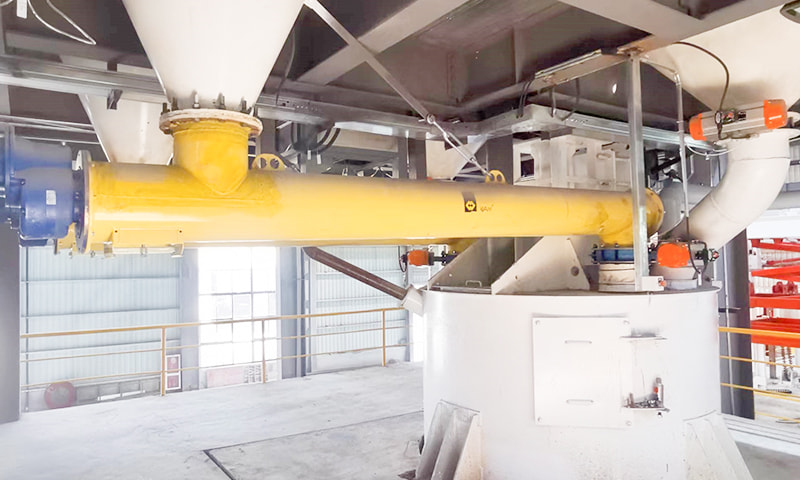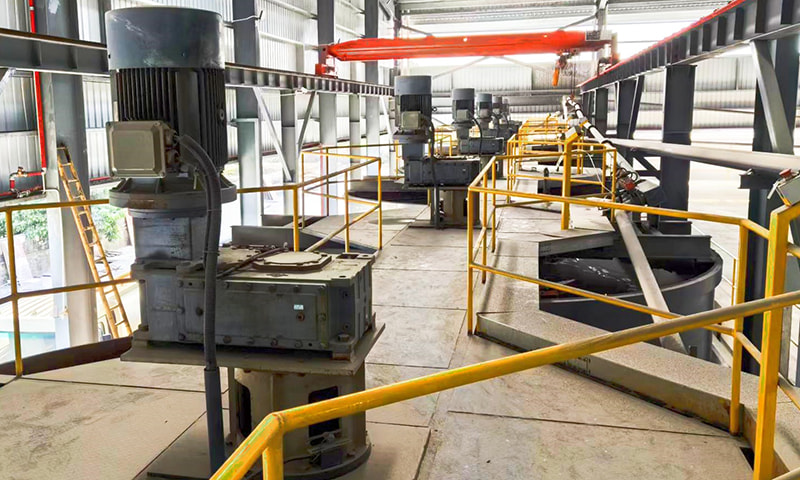Advantages of Pouring Mixer
The biggest advantage of Pouring Mixer is its precise mixing and automated operation. Compared with traditional manual or semi-automated concrete production methods, Pouring Mixer not only enables the mixing of different raw materials quickly and efficiently, but also ensures the accuracy of each mixing. Whether in terms of ratio, mixing time or stirring speed, Pouring Mixer can achieve precise control, reduce human operation errors, and improve the uniformity and stability of concrete.
In addition, Pouring Mixer is equipped with advanced automated control systems that reduce manual intervention while increasing production continuity. This automated operation not only improves the efficiency of concrete production, but also greatly reduces the quality fluctuations caused by improper manual operation. The equipment can accurately grasp the ratio of various raw materials during work, ensure that the quality of each batch of concrete is within a controllable range, greatly meeting the production needs of high-strength and high-quality concrete.
Improve concrete production efficiency
In construction projects, the production speed and quality of concrete directly affect the construction progress. Traditional concrete production methods rely on manual mixing or semi-automatic equipment, which is not only inefficient, but also prone to proportional errors. The introduction of Pouring Mixer has significantly improved the production efficiency of concrete.
First of all, Pouring Mixer can complete the mixing task in a short time, and through strong stirring and precise mixing, the production speed of concrete has been greatly improved. For large-scale construction projects, more concrete can be produced within the same time to ensure the smooth progress of the project. Secondly, the efficient performance of the equipment itself reduces downtime and adjustment time during the production process, allowing the construction site to operate more smoothly.
Improve the stability of concrete quality
The quality of concrete is a crucial factor in construction projects. Whether it is a high-rise building or an infrastructure project, the strength, durability and compressive resistance of concrete will directly affect the stability and safety of the building. The introduction of Pouring Mixer has significantly improved the quality of concrete.
Pouring Mixer is able to accurately control the proportion of cement, sand, aggregate and other additives to ensure that the concrete produced each time meets the design requirements. The efficient mixing function of the equipment avoids the unevenness that may be caused by manual mixing, thereby ensuring the uniformity and stability of the concrete. Especially in the production of some high-performance concrete, Pouring Mixer's precise control can make every physical characteristic of the material at the state and ensure the quality of the final product.
Reduce production costs and risks
Pouring Mixer not only plays a positive role in improving production efficiency and product quality, but also effectively reduces production costs. Due to the introduction of automated control systems, the need for manual operations has been reduced and material waste and quality problems caused by human errors have been reduced. In addition, the efficient working mode of the equipment makes the production process smoother, reducing the risk of equipment failure and downtime during the production process, thereby further reducing operating costs.
In the construction industry, especially in large-scale projects, the demand for concrete is very large. Pouring Mixer can help companies better meet the concrete supply needs of large-scale projects by improving production efficiency and stability. More importantly, the efficient performance of the equipment means that construction companies can ensure that the project is completed on time while reducing the construction period, reducing the additional costs and risks caused by project extensions.
Adapt to diversified production needs
As the complexity of construction projects increases, the requirements for concrete have become increasingly diversified. From regular concrete to high-performance concrete, from standard specifications to customized formulations, the construction industry’s demand for concrete is no longer single. Pouring Mixer has flexible configuration and adjustment functions, and can quickly adjust the concrete ratio according to the specific needs of the project to ensure that the produced concrete meets the specific requirements of different projects.
Whether used for infrastructure construction, industrial buildings or high-rise residential buildings, Pouring Mixer provides concrete that meets design standards to meet the needs of different types of projects. This flexibility allows Pouring Mixer to adapt to the rapidly changing needs of the construction industry and become an indispensable device in various construction projects.
Future development direction
With the continuous requirements of the construction industry for energy conservation, environmental protection and automation levels, the development of Pouring Mixer is also constantly evolving. In the future, Pouring Mixer will further strengthen intelligent and automated control, which can achieve more accurate proportion control and production monitoring. At the same time, with the promotion of the concept of green building, Pouring Mixer will also face more environmental protection requirements, and equipment will be continuously improved to reduce energy consumption, reduce emissions, and improve resource utilization efficiency.
In addition, with the development of industrial Internet and big data technology, the future Pouring Mixer may integrate more intelligent functions to optimize the production process through real-time data analysis and further improve production efficiency and concrete quality. The intelligent Pouring Mixer will enable construction companies to better predict production demand and accurately regulate the production process of each batch of concrete, thereby improving the management level and operational efficiency of the entire construction project.







